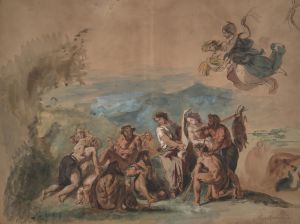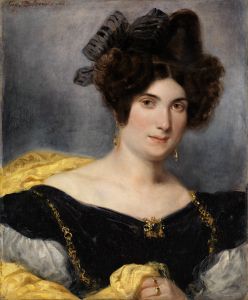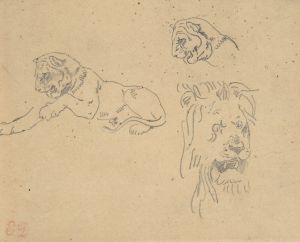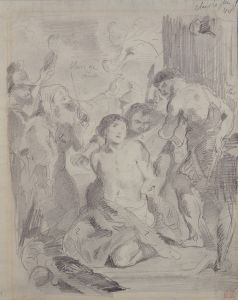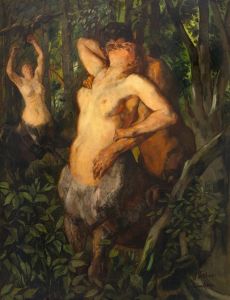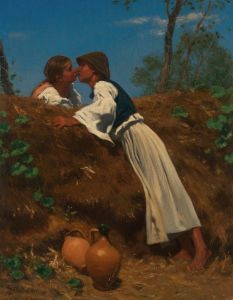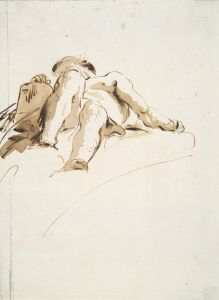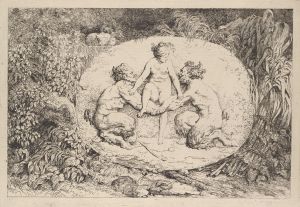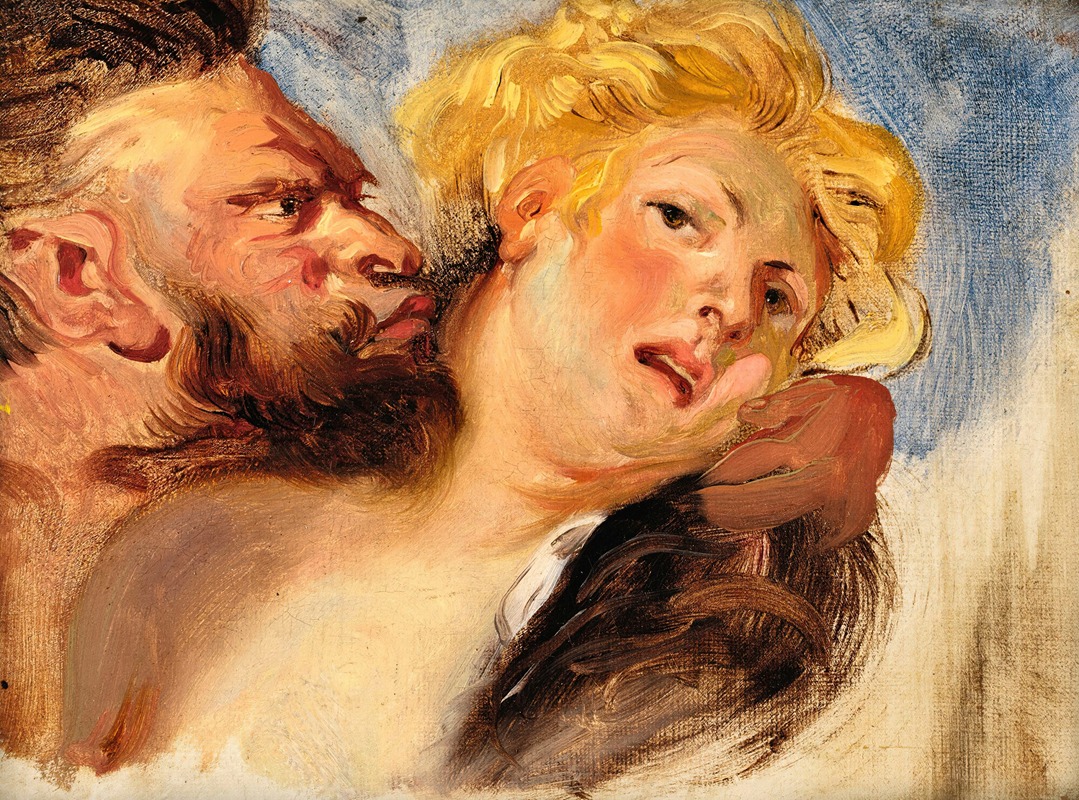
Satyr Embracing A Nymph, After Peter-Paul Rubens
A hand-painted replica of Eugène Delacroix’s masterpiece Satyr Embracing A Nymph, After Peter-Paul Rubens, meticulously crafted by professional artists to capture the true essence of the original. Each piece is created with museum-quality canvas and rare mineral pigments, carefully painted by experienced artists with delicate brushstrokes and rich, layered colors to perfectly recreate the texture of the original artwork. Unlike machine-printed reproductions, this hand-painted version brings the painting to life, infused with the artist’s emotions and skill in every stroke. Whether for personal collection or home decoration, it instantly elevates the artistic atmosphere of any space.
"Satyr Embracing A Nymph, After Peter-Paul Rubens" is a painting by the renowned French Romantic artist Eugène Delacroix. This work is a reinterpretation of a theme originally explored by the Flemish Baroque painter Peter Paul Rubens. Delacroix, known for his expressive brushwork and vibrant use of color, often drew inspiration from the works of past masters, and this painting is a testament to his admiration for Rubens.
Eugène Delacroix (1798-1863) was a leading figure in the Romantic movement, which emphasized emotion and individualism, as well as the glorification of the past and nature. Delacroix's works often featured dramatic subjects, rich color palettes, and dynamic compositions. His interest in Rubens is well-documented, as Rubens' own work was characterized by similar qualities, including dynamic movement and a vivid use of color.
The painting "Satyr Embracing A Nymph" depicts a mythological scene involving a satyr and a nymph. Satyrs are creatures from Greek mythology, often depicted as half-human, half-goat, and associated with Dionysian revelry and rustic music. Nymphs, on the other hand, are mythological spirits of nature, often depicted as beautiful maidens inhabiting rivers, woods, or other natural settings. The interaction between the satyr and the nymph in this painting is emblematic of the Romantic fascination with mythological and exotic themes.
Delacroix's interpretation of this subject reflects his ability to convey intense emotion and movement. The painting likely features the lush, swirling brushstrokes and vibrant colors that are characteristic of his style. Delacroix's approach to this subject would have been influenced by his study of Rubens' work, which he admired for its vitality and sensuality.
Peter Paul Rubens (1577-1640) was a prolific artist whose works are celebrated for their exuberant energy and sensuous appeal. Rubens often depicted mythological and allegorical subjects, and his influence on Delacroix is evident in the latter's adaptation of similar themes. Delacroix's engagement with Rubens' work is part of a broader dialogue with the art of the past, which was a common practice among artists seeking to learn from and build upon the achievements of their predecessors.
While specific details about the creation and current location of "Satyr Embracing A Nymph, After Peter-Paul Rubens" by Eugène Delacroix may not be widely documented, the painting remains an example of Delacroix's engagement with classical themes and his ability to reinterpret them through the lens of Romanticism. This work exemplifies Delacroix's skill in blending inspiration from past masters with his own distinctive artistic vision, contributing to his legacy as one of the most influential artists of the 19th century.






